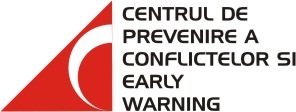Endless clashes between political players, notes, resignations, corruption and misuse of authority, media scandals. This is the 2007 image of Romania, as of recently labelled as “crime exporting country.”
This is how foreigners see us, and it’s no wonder they do, since we don’t have a country brand. Ever since 2001 the country brand concept has been discussed in conferences, symposiums and marketing expert meetings, though talks have hardly gone beyond moaning that “our country lacks a ‘business card’ to set it apart from all others” or the frustration of seeing Bucharest mistaken for the Hungarian capital of Budapest. In fact, Romania is one of the few states in the world having not defined a country brand for themselves, for the rest of the world to identify. That is, other than “Dracula and Ceauşescu’s country” or the image of immigrants, beggars and criminals.
“In terms of image, Romania is reduced to nil”
Romania’s 75-page Export Strategy Paper for 2005-2009, focusing on 16 sectoral policies in the areas with the highest export potential (furniture, IT, wine, garment, organic farming, machinery, chemistry and oil processing, business services, electronics and IT, healthcare, rural tourism) has come to naught. The Imagine Romania project was another commendable initiative, which led to nothing but seminars, workshops and the establishment of an NGO coalition haughtily named “Initiative Group for Promoting Romania’s Image.” A Made in Romania programme also went to the dogs, as its budget was wasted on all the wrong things, while Branding Romania, managed by the Agency for Governmental Strategies (ASG) is stuttering in the pitch and consultant search stage. While Romanians seem to be terribly averse to foreigners coming to lecture us, they nonetheless made a cool-headed analysis of the flaws in our foreign image capital. Three country branding leading lights have successively warned us that it is more expensive to change a negative perception into a positive one, than it is to build a positive one from scratch. “Romania’s negative image is created by an image vacuum”, expert Simon Anholt believes; for Jack Trout, “Romania is reduced to nil in terms of image,” whereas the celebrated Wally Olins urges us to accept that “Romania is not a particularly important country in the world.”
Rovertising
According to predictions in the advertising market, Romania will be the most publicised brand in 2008, and as we already have tryvertising, blogvertising or badvertising, we will soon speak about rovertising as well. Romanian experts believe a first step in placing Romania on the world map would be the creation of a complex portal, Experience Romania, interactive and rich in information, providing interested foreigners with a host of data on Romanian places and people, video, blogs and texts revealing our better and worse traits. More pessimistic, head of the Agency for Governmental Strategies Alfred Bulai believes the “Romania” brand requires a 10 M Euro budget and three years to build.
A specific initiative will come from the Government, which will increase the budgets of the Foreign Ministry and Ministry of Culture by 2.97 M RON, to fund cultural diplomacy events occasioned by the National Day of Romania, in an initiative intended to be reiterated in 2008 as well. Packages will include Constantin Brâncuşi albums, CDs and DVDs with George Enescu’s music and the Romanian movies awarded in Cannes.
The “Most Wanted” ethnic group
Foreign perception of Romania in 2008 will largely depend on the country’s handling of the diplomatic and image crisis in Italy, the main image blow dealt to Romania in 2007. An important detail must be considered, namely that the anti-Romanian sentiments in the Peninsula did not emerge with the Mailat case. This was merely the outbreak of a dormant xenophobic trend in the Italian society, which surfaced in the racist and anti-immigrant graffiti and in the growth of neo-Fascist movements. The anti-Romanian sentiment pervading all levels of the Italian society is summarised in a 2006 article in Italy’s Il Tempo daily: “The most violent, dangerous race, willing to kill for a handful of change… An ethnic group always featured in the Most Wanted section. Romanians fear nothing, spare nobody, even children and women, always operate in gangs to complete their countless criminal activities. They have a monopoly on prostitution and card cloning.”
National stereotypes
Construction of the country brand in 2008 must draw on the defining features of Romania and of Romanians. Ab ovo, historian Neagu Djuvara opines that we have nothing to show for the so-called “national-specific traits,” given that the Roman conquest was not necessarily required by the need to incorporate the Dacian area in the Roman Empire, but rather by the Romans’ banking problems and the Dacians’ proven expertise in forging Roman coins. International television channels (e.g. TV5, CBS, BBC) whose reporters came in and out of the country covering orphanages, prostitution, paedophilia and beggars, have defined us every time as a poor, unsafe, backward country. This is why to produce the “Romania Brand” will first of all require the removal of the classical images, stereotypes and clichés whose perpetuation abroad we seem to be unimpressed with. Under the People and Personalities heading, we find almost exclusively references to Nicolae Ceauşescu, Dracula, the post-‘90 Romanian immigrant, the begging gypsies, the local and central barons. In terms of Character and behaviour, Romanians are perceived as living on the principle “if I can’t have it, no one else should,” while also being known for their disregard for rules, bribery, cronyism and public fund theft, indolence, ignorance, lack of dignity in relation to foreigners and recent history, lack of social cohesion, the “hit and run” mentality, tolerance for corruption. As for the Simple Imagery, Romania is defined by poverty, the wooden plough, roving gypsies, mudbrick houses, Ceauşescu’s orphans, stray dogs, gloomy hospitals. Finally, in terms of events, foreigners know us for the 1989 revolution, the miners’ riots and the illegal adoption scandal.
Corporate Romania
World marketing guru Jack Trout said “a country must be handled like a business or a brand. Business development directions and areas of interest must be identified. Romania needs a national level strategy, and this is the job of the Government, which must identify what Romania is, what it stands for and what sets it apart from other countries.” Romania should be treated this way, like a corporate brand, if it is to achieve notable results in the medium to long run; we must have no illusions that foreigners’ and our image of ourselves will be significantly improved within two years. No way. Our reassessment and branding strategy must go through three stages. The first is to analyse what we are and what we want in the future, by identifying the historic background, social patterns and economic potential and draw up a synthetic image of the nation in all sectors. A second stage would be the construction stage, with clear-cut goals and an action plan defined. And the last stage, the determined implementation of the action plan.
While apparently easy, the three-stage strategy could not be applied in Romania so far for various reasons, the foremost of which may be that branding always begins within the nation—and this is where the most self-perception and behaviour problems are yet to be solved.









